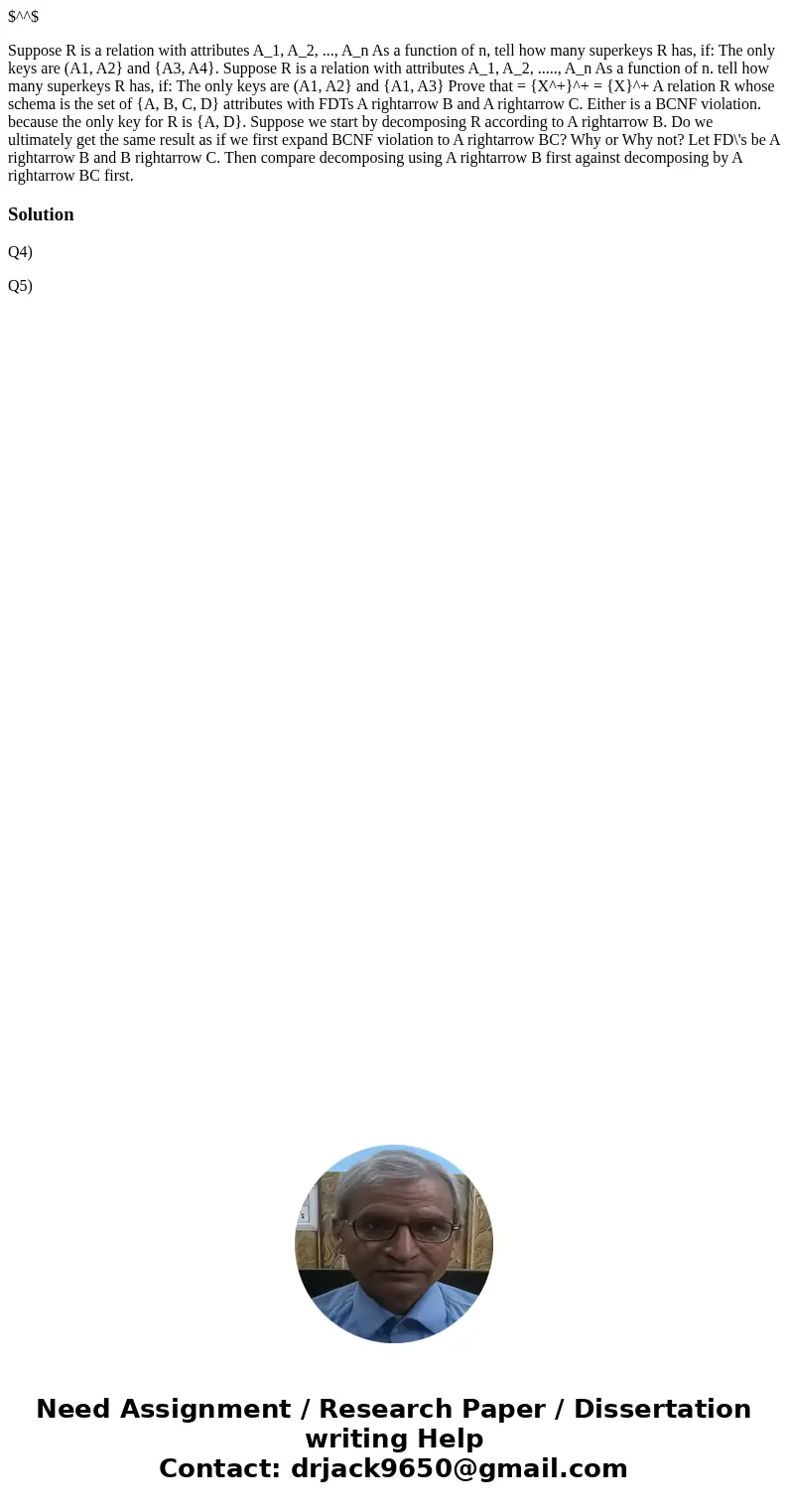Suppose R is a relation with attributes A1 A2 An As a func
$^^$
Suppose R is a relation with attributes A_1, A_2, ..., A_n As a function of n, tell how many superkeys R has, if: The only keys are (A1, A2} and {A3, A4}. Suppose R is a relation with attributes A_1, A_2, ....., A_n As a function of n. tell how many superkeys R has, if: The only keys are (A1, A2} and {A1, A3} Prove that = {X^+}^+ = {X}^+ A relation R whose schema is the set of {A, B, C, D} attributes with FDTs A rightarrow B and A rightarrow C. Either is a BCNF violation. because the only key for R is {A, D}. Suppose we start by decomposing R according to A rightarrow B. Do we ultimately get the same result as if we first expand BCNF violation to A rightarrow BC? Why or Why not? Let FD\'s be A rightarrow B and B rightarrow C. Then compare decomposing using A rightarrow B first against decomposing by A rightarrow BC first.Solution
Q4)
Q5)

 Homework Sourse
Homework Sourse